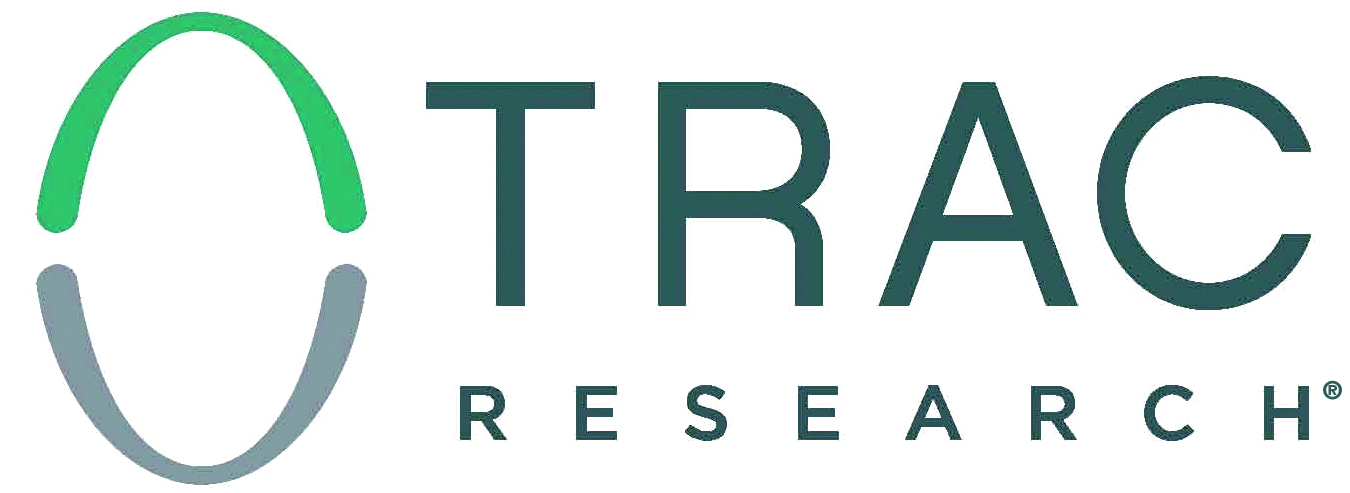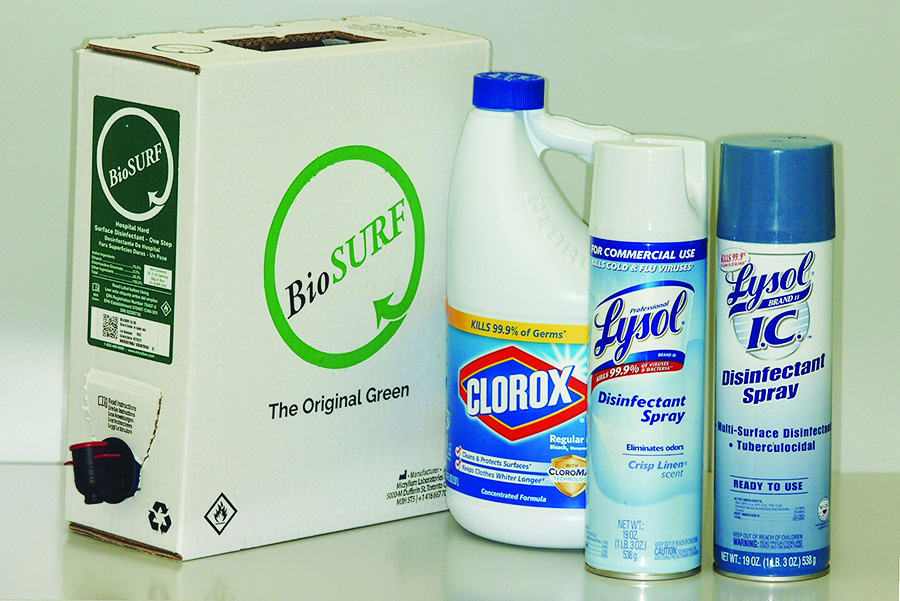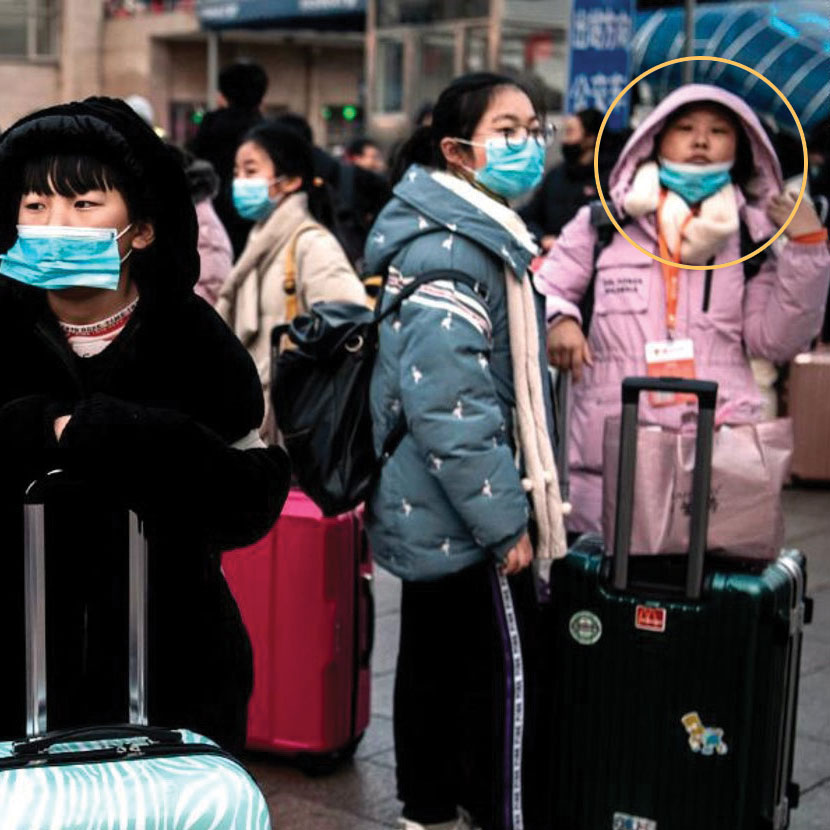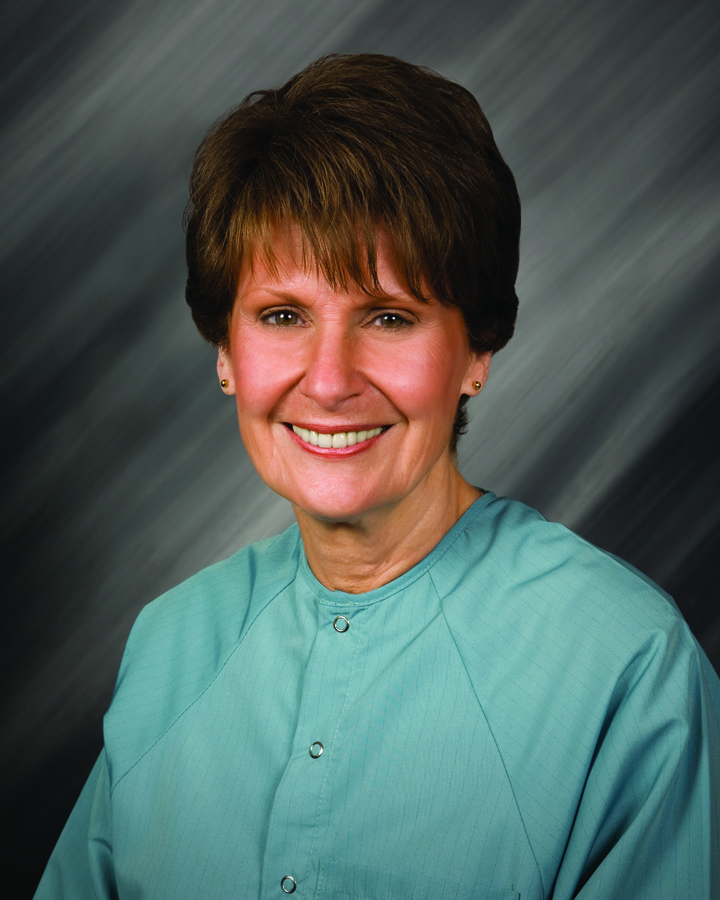
Reprinted with permission from the Gordon J. Christensen Clinicians Report, Volume 13 Issue 5, May 2020, Pages 1, 4 & 5


Gordon’s Clinical Observations: Many of the 3,000 dental companies and organizations are completely trustworthy and honest in their development of products and in their advertisements. When CR research shows potential product deficiencies, they change to meet the needed modifications. However, a significant percentage DO NOT! In this time of infection control challenges and people dying because of COVID-19, CR feels responsible to disclose some of the myths and incorrect beliefs in the important area of infection control.
All Disinfectants Kill Equally Well—NOT TRUE
- TRAC Research evidence shows clearly that different disinfectant formulations have different kill potentials.
- Human proteins (blood, saliva, biofilms, nasal secretions, etc.) greatly reduce, and can totally eliminate, a disinfectant’s kill. (See confirming evidence of this fact: Antimicrobial activity of environmental surface disinfectants in the absence and presence of bioburden. JADA 1989; 119:493-505.) Since publication of this report 30 years ago, nothing has changed to correct the issues raised! (See Clinicians Report October 2017.)
- Since our publication of the above, this lab has tested against a notably resistant non-envelope virus (poliovirus 1, Mahoney strain), in triplicate and in the presence of fresh human whole blood, over 200 surface disinfectant brands, plus updating data as formulations changed on previously tested brands. The evidence is overwhelming: human protein is the “game changer” in a disinfectant’s ability to kill microbes of all types!Almost all dental procedures mix potentially dangerous pathogens with saliva and often blood. COVID-19 virus hides within mucous and other respiratory fluids in droplets. It is not passed as pure culture.
2020 BEST disinfectant brand names: BioSURF Bag-In-A-Box = BEST for healthcare environments

(70.5% by weight or ~83% by volume ethyl alcohol, 0.2% chlorhexidine gluconate, plus other critical ingredients)
Clorox Regular
* Lysol Brand II, identified in 1985 by this lab as the most potent and dependable environmental surface disinfectant available commercially in the U.S., had a formulation change in ~2007 that reduced its ethyl alcohol content 21% by weight to comply with California VOC (volatile organic compounds) laws. This increased its kill time from 30 seconds to 9 minutes for poliovirus 1 in the presence of 10% fresh human whole blood. Today, Lysol Spray Brand III is slower and not as dependable as the current formulation BioSURF in its kill potential in the presence of human proteins.
You Must Pre-Clean First to Remove Blood, Saliva, Etc.—Before You Disinfect—NOT TRUE
Contrary to current recommendations, logic dictates killing the microbes as the first step, then cleaning with the disinfectant, followed by re-disinfecting. This is to protect the person performing the cleaning. COVID-19 and many other pathogenic microbes are still viable on surfaces shortly after treatment. Hurry for operatory turn-around invites carelessness and self-infection of the cleaning person if kill is not sought first. We propose the surface disinfection steps illustrated below.

The above steps require a formulation that cleans and disinfects simultaneously. Currently, BioSURF is the only brand sold in the U.S. which we have identified that accomplishes the above steps well in a 3-minute or less contact time.
Effective use of barriers can take the place of effective disinfectants in many situations. (Be sure to pick up barriers aseptically and dispose of as Hazardous Waste when treating infectious patients. Afterwards, ideally a broad-spectrum surface disinfectant would also be applied to kill any microbes admitted through porous paper barriers or small holes in plastic barriers.)
In the absence of both an effective disinfectant and barriers, clinicians should take emergency patients to sites where these are known to be present before attempting to treat.
2020 BEST disinfectant brand name: BioSURF Bag-In-A-Box for healthcare environments
(available from Benco, Darby, Patterson, PureLife, Schein, etc.)
Pre-Wet Disinfectant Wipes Kill Well—NOT TRUE
Factors that invalidate healthcare use of pre-wet wipe brands sold currently in the U.S.:
- None use a disinfectant that kills well in the presence of clinically relevant human proteins (saliva, nasal secretions, blood).
- The pull-out dispensing and settling of the liquid on the container bottom allow drying of active ingredient before wipe use.
- There is no way to seal the container against air ingress once it has been opened for use.
Pre-wet wipes serve best for household uses (wiping baby bottoms, removing makeup, cleaning food spills, etc.) where microbe kill is not the primary goal.
2020 BEST brand names: Pick any brand you like, but confine to home for general purpose use where microbe kill is not the primary goal.
The Government Tests All Environmental Surface Disinfectants for Effectiveness—NOT TRUE
Both the Environmental Protection Agency (EPA) and Food & Drug Administration (FDA) specify tests and register disinfectants, but neither agency tests each product to validate effectiveness. Originally, there was a national test lab plus state labs that did this, but they were eliminated by government austerity programs in favor of registration based on data manufacturers choose to submit. Unfortunately, most companies choose to forego tests that include relevant human secretions/excretions. Even though the government long ago recognized this system is seriously flawed, it has not resolved the need to validate each product’s kill claims (See Disinfectants: EPA lacks assurance they work. Government Accountability Office (GAO). Aug. 1990). There is an obvious need to require kill in the presence of relevant human proteins because these are always present in healthcare settings of all types and they always interfere with all disinfectant’s kill. However, some formulations can pass this strict challenge, and we submit that these should be the only ones registered in the Hospital-healthcare “level.”
Disinfectant manufacturers have been known to falsify kill claims. In an EPA Tuberculosis Data Call-In, products lost their registration because they could not verify their claim of tuberculosis bacteria kill (See Federal Register/vol. 64, No. 115/Wednesday, June 16, 1999/Notices, page 32225).
Ongoing dilemma for clinicians: How can I assure my disinfectant kills thoroughly? You can’t. CR Foundation has tried to fill the gap between what is claimed and what is actually delivered clinically by performing careful non-company-funded testing, but ultimately each clinician must decide who and what to believe.
Our Face Masks Are Adequate—NOT TRUE
TRAC Research has shown many face masks do not stop patient oral fluid entry into clinicians’ respiratory system (See dye tracer test developed by this lab in Efficiency of 42 brands of face masks and 2 face shields in preventing inhalation of airborne debris. Gen Dent 1991, Nov-Dec;39(6):414-21). Since publication of this report 30 years ago, nothing has changed to correct the issues raised! (See Clinicians Report July 2018.)
- Most face masks lack snug fit all around periphery (nose, cheeks, under chin), and are worn improperly (see photo to right).
- N95 Respirators are designed with close peripheral fit, plus high filtration.
N = not resistant to oil containing particles; 95 = filter at least 95% of submicron particles - National Institute of Occupational Safety and Health (NIOSH) sets standards and specifies test procedures, but does NOT validate all data submitted.

From COVID-19, CNN, Jan. 24, 2020
2020 brand names:
-
Critical Cover PFL #608 series with headband = routine dental care
-
N95 Respirators = use with infectious patients
(many different N95 designs are available—choose the one that fits best around entire periphery on your face)
Infection Control CE Teachers Know Which Products Are Most Efficacious and How To Use Them Most Effectively—NOT NECESSARILY
This is a “clinician beware” area. Almost ALL who teach and write about infection control are not microbiologists qualified to perform microbe-based testing to validate the products they recommend. Of those who have microbiology training, almost none work with viruses. Most CE teachers use promotional and other information generated by companies as their information source.
CE Speaker/Writer Ethical and Legal Responsibility: CE speakers/writers bear sufficiently strong ethical and legal responsibility to motivate many of them to carry liability policies. Clinicians also carry strong ethical and legal responsibility to establish that their CE teacher is not company funded and presents objective evidence on the performance of the products they select as a result of their reading or course attendance.
TRAC RESEARCH CONCLUSIONS: Often product marketing and clinical performance differ, leading to myths and dangerous beliefs. For disinfectants, these problems are more serious with deliberate deception that endangers people’s lives. Serious lacks include:
- Clinicians are not aware the U.S. EPA defines three levels of disinfectants (limited spectrum, broad spectrum, hospital-healthcare). Manufacturers do not prominently display these levels, preventing an informed choice.
- Hospital-healthcare “level” EPA requirements are dangerously lacking because they do not require products to pass tests using a resistant virus in the presence of relevant concentrations and types of fresh human secretions or excretions.
These have been problems for many years. We submit government disinfectant efficacy regulations should favor patients and consumers, not industry sales. The two deficiencies listed above need to be corrected—NOW!
©2020 CR Foundation®
This vital information was shared by CR Foundation®. Additional timely help is available at www.CliniciansReport.org including:
- TAKE YOUR PRACTICE BACK! Surviving and Thriving in the New Dental Economy
- COVID-19: Updated and Latest Dental Implications and Solutions
- What Essential Armor Do You Need for the COVID-19 Battle?

Rella Christensen
Rella Christensen co-founded CR Foundation and directed this well-known dental products testing institute for 27 years. Subsequently she served as Chairman of the Board of Directors. Currently she is the team leader of a non-profit institute dedicated to in-depth and long-term clinical studies of restorative materials, preventive dentistry, and dental caries, known as Technologies in Restoratives and Caries Research (TRAC Research) which is the human studies section of CR.
Rella received her BS in Dental Hygiene from the University of Southern California, and practiced dental hygiene for 25 years. She earned a PhD in physiology with an emphasis on microbiology from Brigham Young University, and completed a post-graduate course in anaerobic microbiology at Virginia Polytechnic State University. In 2002, she received an honorary doctorate from Utah Valley University. In 2012, Rella received a Congressional Record Tribute for her life-long contributions to the profession of dentistry.
CR Foundation® was founded in 1976 under the premise that dentists could evaluate, compare, and rank all types of dental products (restorative, preventatives, equipment, instruments, IC, and even some medications). The purpose for this mission is to insure that clinicians know how products differ so they can make informed choices for their patient’s treatment and the health and safety of all in the office. Today, over 450 dentists and their teams (including Gordon and Rella) volunteer for the clinical field portion of the work where clinical acceptance of products is determined. This information is combined with in-house laboratory tests and disseminated monthly in the esteemed Gordon J. Christensen CLINICIANS REPORT®.
CR Foundation® is an education foundation with a 501(c)3 charity designation by the United States Internal Revenue Service. The Foundation Bylaws strictly prohibit any funding from dental companies for product evaluations! CR is a self-funded non-profit that receives funding from dentists who purchase the Gordon J. Christensen CLINICIANS REPORT® publication (circulated to dentists in 92 countries); by dentists who attend a variety of ADA and AGD accredited continuing education courses including the highly popular CR Dentistry Update®; and by dentists who generously make donations to CR Foundation! At no time in CR’s long history has any company paid for the independent and objective work accomplished by dentists for dentists!




